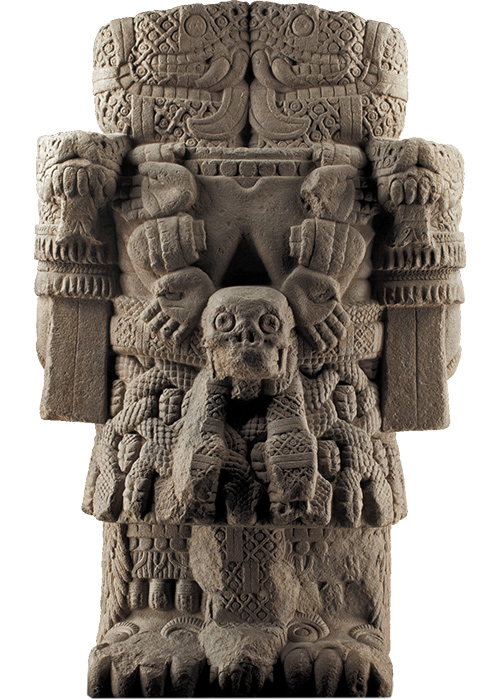
Statue of Coatlicue, National Museum of Anthropology in Mexico City (Photo: Los Puntuales)
In the late 1930s and early 1940s the United States saw an explosion of exhibitions of art and artifacts from the pre-Columbian Americas. As World War II loomed on the horizon in Europe, America promoted cultural diplomacy with its hemispheric neighbors—part of the Pan-Americanism movement, which sought to create greater understanding and collaboration between nations.
One of the largest such exhibitions was 1940’s “Twenty Centuries of Mexican Art / Veinte Siglos de Arte Mexicano,” which took over the newly completed Museum of Modern Art in New York City. It was mounted during a moment of great tension between the two nations, as Mexico had just expropriated its oil resources, and many in the American business community would have preferred invasion—or at least sanctions—rather than offering a premier institution as a venue for Mexico to showcase its art. However, the show was the talk of the town, with Vogue reporting that “New York, in its upper social stratum, has definitely gone Mexican,” and portions of the exhibit traveled to other cities as well over the next few years.
Ellen Hoobler, William B. Ziff, Jr. curator of art of the Americas at Baltimore’s Walters Art Museum, explores the idea of cultural diplomacy and the important role art can play between nations.
World Art History Certificate elective: Earn 1/2 credit*
General Information
*Enrolled participants in the World Art History Certificate Program receive 1/2 elective credit. Not yet enrolled? Learn about the program, its benefits, and how to register here.